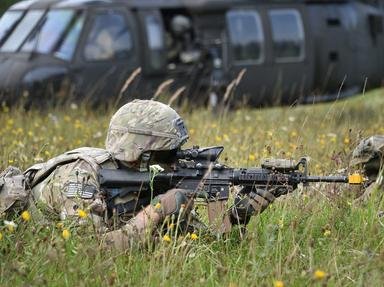
Elite Troops Through History Trivia Quiz
Most nations field units of standard issue troops (called GIs in the U.S.) as well as elite or more specialized units. How many of these historical elites can you match with the culture from which they arose?
A matching quiz
by havan_ironoak.
Estimated time: 3 mins.